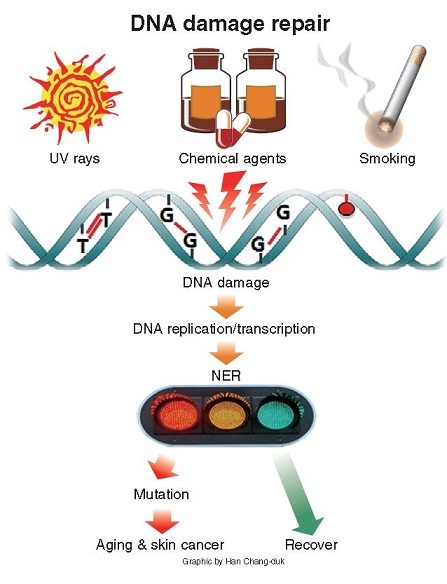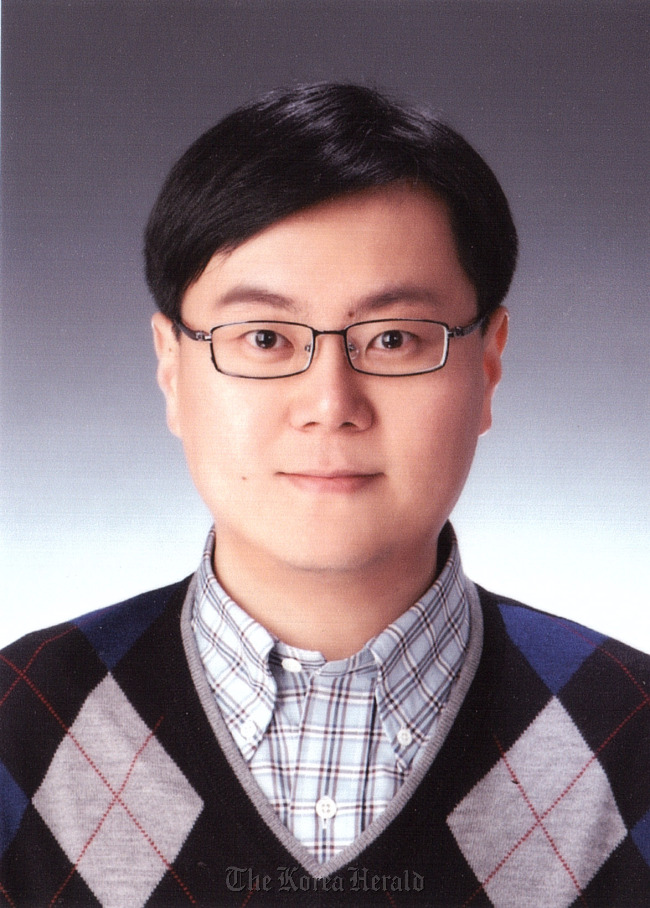
A team led by professor Kang Tae-hong of Dong-A University Department of Biological Science said nucleotide excision repair, or NER, holds the key through the modulation of enzymes to prevent diseases such as skin cancer, developmental disorder and progeria.
NER has been widely known to play a vital role in repairing damages that suppress the process of DNA replication and transcription.
But the team’s study of ATR (ATM and Rad3-related) and HERC2 (E3 ubiquitin-protein ligase) enzymes for xeroderma pigmentosum complementation group A, or XPA genes, showed that damaged DNA could be repaired via a control process for the first time in biology.
XPA detects and identifies DNA damage, then signals to NER proteins for repair at the “site of injury.”
ATR enzymes serve as the “pathway ... composed of a series of DNA damage sensors, signal mediators, transducers and downstream effector molecule” that helps stabilize XPA genes.

“The DNA damage checkpoint responses serve to monitor genomic integrity and coordinate multiple cellular pathways to ensure efficient repair after DNA damage,” the team said in the Oncogene journal on Nov. 26.
On the other hand, HERC2, a DNA enzyme, moves in the opposite direction of ATR by degrading the functions of XPA, thus decreasing the DNA repairing mechanism.
The latest discovery could lead to developing potential materials that can boost the activity of ATR enzymes, while deterring HERC2 to strengthen XPA and NER for DNA recovery.
“Down-regulation of HERC2 improves repair efficiency after cisplatin-induced DNA damage by enhancing XPA protein stability,” it added.
“These findings suggest that HERC2 acts as a general regulator in multiple DNA damage response mechanisms by ubiquitinating and degrading key reaction players.”
Kang said he hopes the findings would hopefully open the way to develop medicines that help stabilize XPA genes to prevent diseases associated with UV rays and smoking.
By Park Hyong-ki (hkp@heraldcorp.com)









![[Hello India] Hyundai Motor vows to boost 'clean mobility' in India](http://res.heraldm.com/phpwas/restmb_idxmake.php?idx=644&simg=/content/image/2024/04/25/20240425050672_0.jpg&u=)








